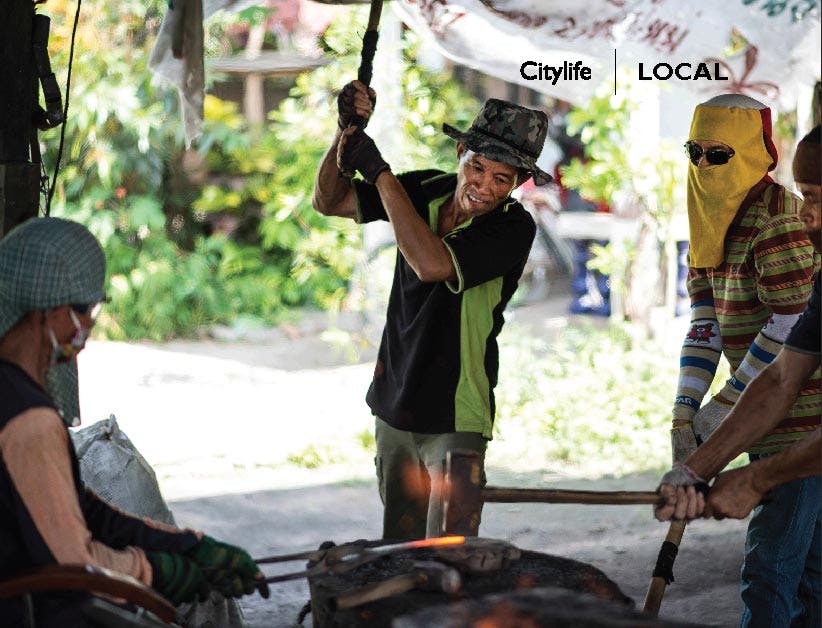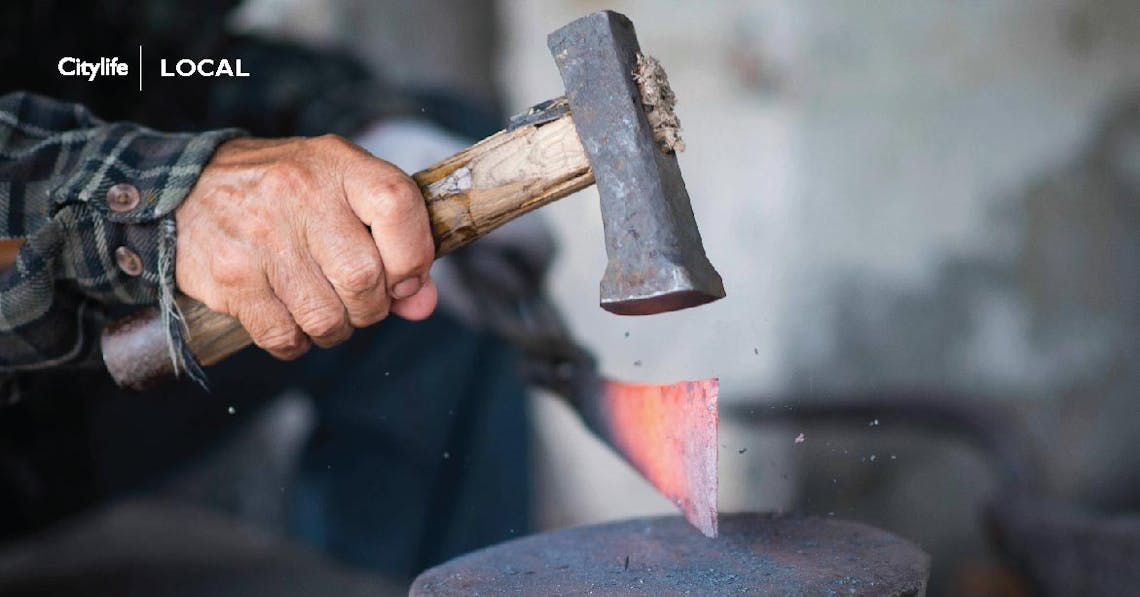I am lost, hopelessly lost. The kind of lost that has you checking your gas gauge every five minutes lost. As impressive as Thailand’s 3G coverage is, I am struggling to find my location. To complicate matters, it appears as though I have lost myself in the late to middle Lanna period, 1300 CE or so. There is not a motorcycle to be seen. Not a car or truck. I left those long ago. The only reminder of the modern world is the odd advertising banner that has been commandeered for a tarp or shed cover. I have been told time and again that for every kilometre you drive out from Chiang Mai, you go back a decade. Here, southwest of San Patong, my mission fits the bill: I am in search of a blacksmith. Yes, the charcoal, soot, iron, flame, “Excalibur” sort of blacksmith. I have heard rumours and tips of his location, but as with many directionally reliant things in Thailand, nothing is certain. Through back roads, past rice fields and towns of progressively smaller sizes, I slowly hone in. Pausing by a river to see what the 3G status is, it is the sound that first tips me off. Rhythmic and metallic, it comes in bursts from down the road. Pulling up beside an open courtyard, the cadenced banging is quickly joined by the glow and heat from a roaring forge.
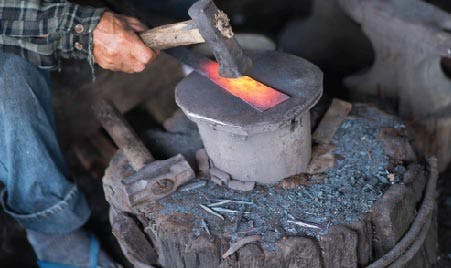
Looking Back The history of blacksmithing is both ancient and far-reaching. Most believe it began in the fertile crescent of Mesopotamia with the working of gold, silver and bronze. These relatively easily manipulated materials paved the way for the skills needed to work the much tougher material of iron. As its strength and durability began to outclass similar weapons and tools made of bronze, iron became the preferred material for both weapons of war and everyday tools. Techniques for its creation and manipulation began to spread from 1500 BCE onwards, becoming entwined with everyday life through the creation of objects for the house, the farmer’s field and the field of battle. The Romans, the Arabs, the Byzantines: all laid the successive milestones in the growth of metalwork and blacksmithing. As it spread west into Europe through their empires, similarly did it spread east, moving through Persia into India and the Chola Empire, into Southeast Asia and what would eventually become Thailand. While the industrial revolution eventually made blacksmithing technologically obsolete, the need for locally made and manufactured ironworks never diminished in the rural countryside. Demand for quick, local repairs and supplies allowed for such institutions and smiths to survive to this day, filling the needs of locals and farmers alike. So here I am.
At the Forge It is as if they’ve been summoned telepathically. The three labourers wielding giant sledgehammers stand in unison. Sweat and soot covered, they make their way over to the glowing red blade. On cue, in a synchronised rhythm, they rain down blows on a glowing piece of metal no larger than a classroom ruler. Here in this rural blacksmith, workers make the unique and oddly beautiful machetes used throughout the rural north in the fields, rice paddies, farms and house yards. Taking an almost triangular shape, these blades have a long cutting edge, a dull backside for hammering and a sharp top edge that can be used to pry, cut or slice. It is a wonderfully unique and versatile tool.
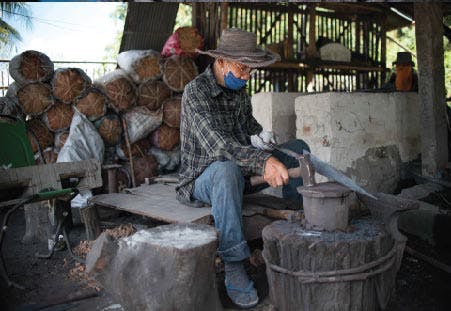
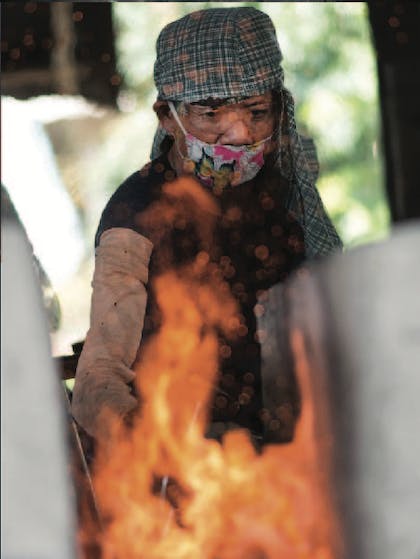
Another Day, Another Blade As the afternoon sun climbs higher, the heat and flames become too much and a break is called. The labourers lounge in the shade, smoking tightly hand-rolled cigars (as if more smoke is a better thing). Too exhausted to be bothered by questions, they doze off into a smoke filled haze. One however finds the energy to move to the sharpening wheel and begin the work of edging the blades. He says that many of the labourers are just that: labourers. They are here to simply earn what meager wage may come from the hours of work, not interested in the skills needed to learn the trade. This man, however, seems different: a little eager, a little more aware of what is needed to be done and the skills that are necessary to carry on the craft.
